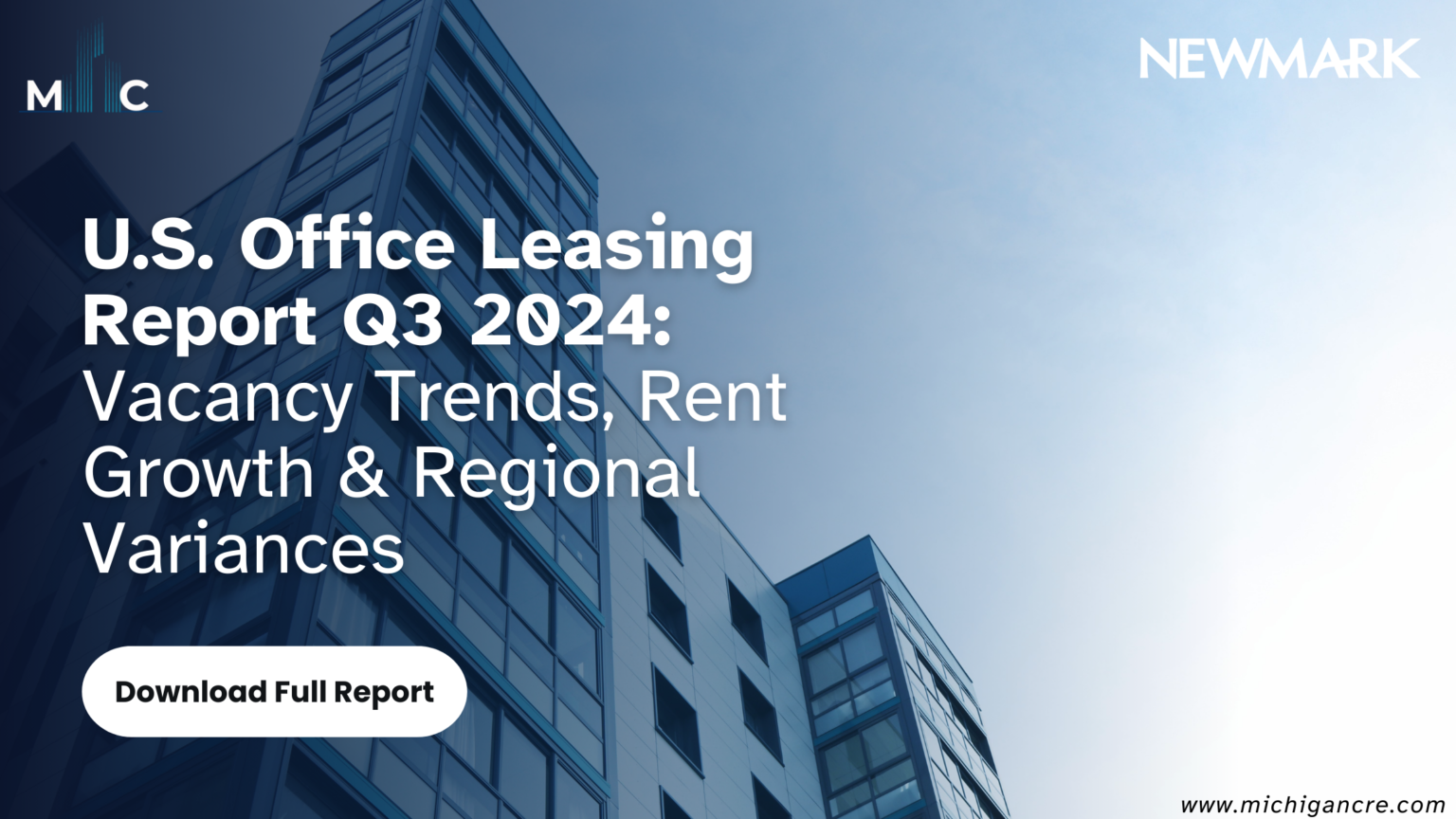As we analyze the U.S. office market’s performance in the third quarter of 2024, it’s clear that the industry faces a complex landscape, influenced by evolving employment patterns, hybrid work adoption, and region-specific demands. This blog dives into the notable trends in office leasing nationwide, unpacking factors such as rising vacancy rates, regional differences, and emerging patterns in rent and occupancy.
Labor Market and Employment Trends
Since February 2020, office-using employment has steadily grown, contributing to approximately 243.2 million square feet of office demand. However, this growth has lagged overall employment since early 2023 due to tech sector stagnation. While 35 of the top 50 office markets saw growth in office-using employment, this increase alone is insufficient to counter the structural changes driven by hybrid work.
Hybrid work continues to reshape office demand, with nearly 49% of pre-pandemic leases remaining unrenewed. Moreover, lease sizes have decreased by an average of 13.5% since pre-pandemic levels, signaling a trend toward smaller space commitments.
Office Leasing Report of Vacancy Rates and Net Absorption
Despite increasing leasing activity—rising to 1.0% of inventory this quarter—net absorption remains negative at -3.2 million square feet, marking a 15.5 million square foot improvement since early 2024. Vacancy climbed to 20.4% nationwide, as office occupancy rates struggled to stabilize. Southern regions notably outperformed others, with Dallas, Northern New Jersey, and Columbia, SC, leading net absorption gains. Conversely, the East and West regions experienced significant occupancy losses.
Secondary and tertiary markets are proving more resilient, capturing the most positive absorption as they adjust to changing tenant needs more flexibly than major metropolitan centers.
Regional Leasing Activity and Rent Trends
The South region leads the leasing activity, driven by new preleased developments, especially in Dallas. In contrast, Eastern and Western regions faced negative net absorption. While national asking rents rose modestly (0.8% year-over-year), concessions remain high, with tenant improvement (TI) allowances averaging 65.6% above pre-pandemic levels. Effective rents are also pressured downward as landlords prioritize occupancy over rental rates.
Class B properties, especially in suburban areas, are surprisingly resilient, maintaining lower availability than Class A spaces. Within central business districts (CBDs), Class A and newer constructions perform better, capturing a more stable demand. Nonetheless, a growing preference for suburban office spaces continues, challenging CBD performance.
Office Construction Pipeline and Sublease Trends
The office construction pipeline declined to 38.7 million square feet—nearly 19.5 million square feet below 2023 levels. Sublease availability, however, remains high, especially in tech-dependent regions like San Francisco and Seattle, where tech layoffs have contributed to an elevated sublease inventory. This trend is increasingly visible in both gateway and major markets, further suppressing rental growth in these areas.
While high-quality buildings outperform the market, secondary and tertiary markets see the most robust demand in line with the current economic climate. This demand shift from traditional CBD hubs to secondary markets has pushed leasing activity upward in these regions.
Rent Performance and Tenant Preferences
Despite declining occupancy, rent growth has remained stable in most markets, with major hubs such as San Francisco and Manhattan seeing the highest asking rents. Landlords increasingly offer concessions to attract tenants, from enhanced tenant improvement packages to extended free rent periods. However, effective rents, which consider concession impacts, reveal a downward pressure.
In gateway markets, trophy assets command high rent premiums, yet Class B suburban offices often show higher occupancy rates than CBD Class A spaces. This “flight to affordability” highlights tenants’ increasing willingness to trade prime locations for cost savings, especially as hybrid work enables more workforce flexibility.
Conclusion
Q3 2024 highlights a market in transition, facing the lasting effects of hybrid work, a cautious labor market, and evolving tenant preferences. The Southern and tertiary markets have emerged as resilient players, offering higher occupancy and capturing much of the new demand. As we approach 2025, office leasing dynamics will likely continue to reflect these trends, reshaping the U.S. office landscape toward more regionalized growth patterns.
Ready to navigate the evolving office leasing landscape? Contact us today to find the perfect space for your business or investment needs. Whether you’re looking to lease, buy, or optimize your commercial real estate portfolio, our team is here to help you make informed decisions in a changing market. Let’s connect and explore your options!
